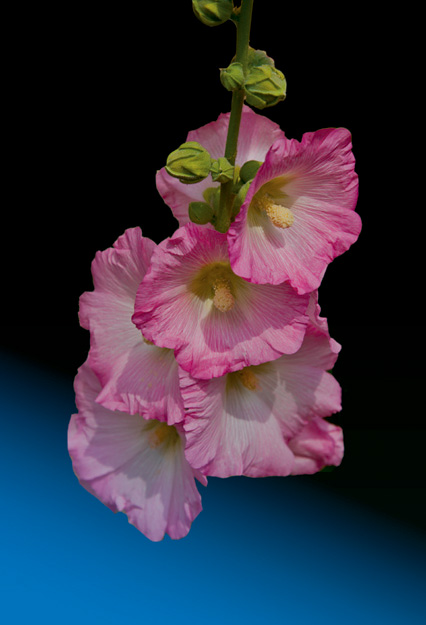11
Finding What Sells
Selling photographs at any POD website is challenging. The competition is fierce, but you can be successful if you have good artwork, engage in social networking, and have a blog.
Good artwork is a matter of following your heart and your head. Selling your work is dependent upon where you live, what you shoot, and what you add to your photos that makes them different from the rest.
Example: Photographing Flowers
Consider flowers—a great subject, but one in which there are millions of photos on the Internet. In order to distinguish yours from the others, you need to have a unique approach to the subject. This might involve using an image-manipulation program to tweak your images, such as adding or taking away unique features that will catch a collector’s eyes.
The first task in being successful with something like flowers is to surf the Internet to find what’s good and emulate that approach, changing it by adding your own style. For example, I found Robert Mapplethorpe’s flowers to be fascinating—perfect in every way. Mapplethorpe was a risqué artist who photographed controversial subjects, but also photographed flowers. He has to be one of the only artists in this genre to achieve near-perfection in his images. I can’t imagine how much time he put into setting up his scene to get the compelling lighting and color in his flower images.
Today, you can use image-processing programs like Photoshop and Elements to produce effects à la Mapplethorpe. To be sure, this process takes time, but it’s well worth it because the images you can produce are stunning. A good example of a tweaked image is the one in Figure 11.1. The image was shot in Cartagena, Columbia, along the wall of a building on a residential street. The flowers were fresh and flawless, without one nick, scratch, or dying part (something that you have to be on the watch for before taking a picture).
I tweaked the flower in Photoshop by eliminating the background it was framed with and adding a new background. After that task was complete, it was time to play with the light in the photo, perhaps the one task that sets apart your image from the others online. In order to do this, you have to copy and paste the flower onto a transparent background. Then you have to create a new background under it, something that Photoshop and Elements permits you to do using Layers.
After studying the color wheel to find a color that best contrasts the pink in the flower (I picked navy blue), I used a trial-and-error process to determine where the gradient would be placed. The flower was then too bright for the background. It looked better subdued, a process you can achieve by lowering the opacity between the background layer and the layer in which the flower lies. The subdued effect gives the illusion that the photograph was taken at night, which wasn’t the case (see Figure 11.1).
Note
Creating an illusion in your shot can enhance its salability.
Note
Flowers are one of the few subjects that photograph well with a point-and-shoot camera.
Now that you have seen how to create near-perfection, you can move onto how to postprocess in some of these programs.
Figure 11.1 You can achieve near perfection when tweaking images of flowers by tweaking in Photoshop or Elements.

